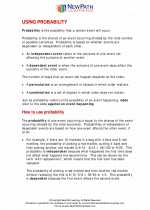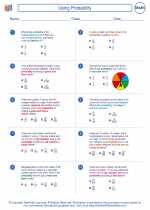Controlled Conditions in Experiments
When conducting scientific experiments, it is important to maintain controlled conditions to ensure the validity and reliability of the results. Controlled conditions refer to the factors that are kept constant or unchanged throughout the experiment. This allows the researcher to isolate the effect of the independent variable on the dependent variable.
Key Concepts
1. Independent Variable: This is the variable that is being manipulated or changed by the researcher. It is important to keep the independent variable consistent and controlled to observe its impact on the dependent variable.
2. Dependent Variable: This is the variable that is being measured or observed to see how it responds to the changes in the independent variable. Keeping the conditions controlled ensures that any changes in the dependent variable can be attributed to the changes in the independent variable.
3. Controlled Variables: These are the factors that are kept constant throughout the experiment to prevent them from influencing the results. By controlling these variables, the researcher can be more confident that any observed effects are due to the manipulation of the independent variable.
Examples
Let's consider an example of a plant growth experiment:
Independent Variable: Amount of water given to the plants
Dependent Variable: Height of the plants
Controlled Variables: Type of soil, amount of sunlight, temperature, type of plant species
Study Guide
When designing an experiment, it is important to identify the independent and dependent variables, as well as the controlled variables. Here are some key steps to remember:
- Identify the independent variable that will be manipulated.
- Determine the dependent variable that will be measured or observed.
- List the controlled variables that need to be kept constant throughout the experiment.
- Ensure that the conditions are controlled and consistent to obtain reliable results.
- Record and analyze the data to draw conclusions about the relationship between the independent and dependent variables.
By maintaining controlled conditions in an experiment, researchers can draw accurate conclusions about the effects of the independent variable on the dependent variable.
.◂Math Worksheets and Study Guides Seventh Grade. Using Probability

 Worksheet/Answer key
Worksheet/Answer key
 Worksheet/Answer key
Worksheet/Answer key
 Worksheet/Answer key
Worksheet/Answer key
